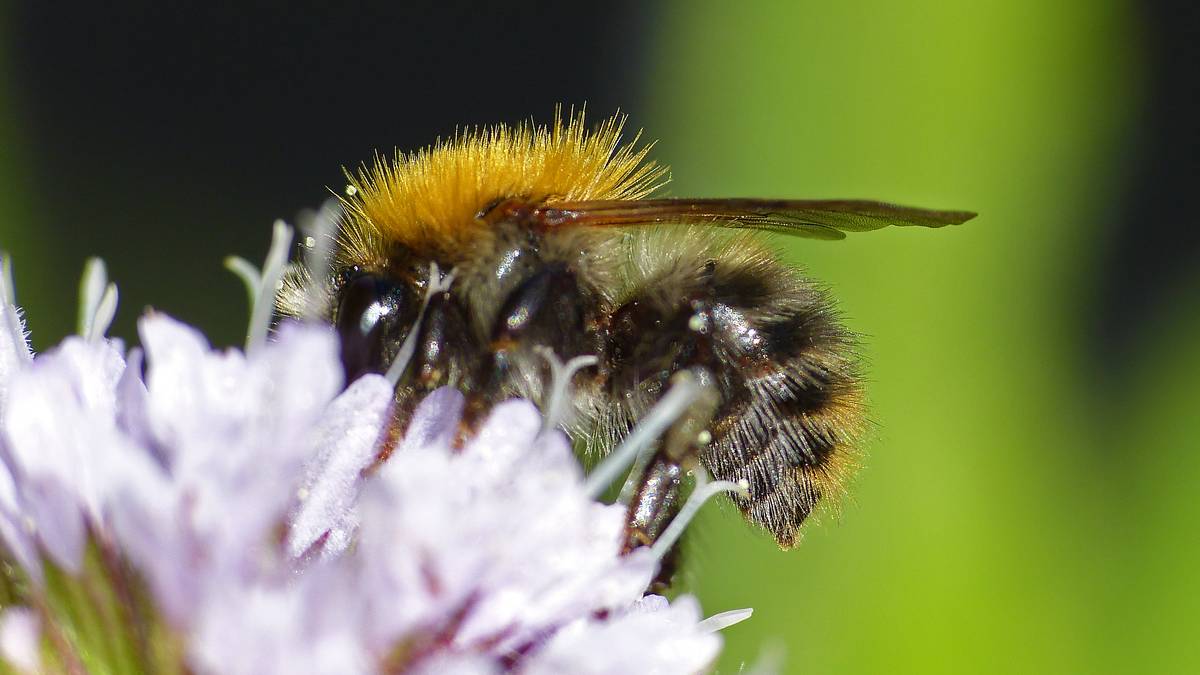Like most bees, bumblebees have a hard time.
They do battle against pesticides, habitat loss, and parasites. This led to a sharp drop in their stocks.
Up to 75 percent of species have disappeared in certain places.
Now scientists have discovered another threat. Global warming can cause bee breathing problems.
These results were recently presented at an annual meeting between Society for Integrative and Comparative Biology.
– This study shows that some types of bees are highly vulnerable to climate changes. That’s what John Hranitz says. He is an environmental geneticist, who studies bees at Bloomsburg University in Pennsylvania.
sees the trend
The new study was conducted by researchers in the USA. They believe that nearly half of the country’s 45 bumblebee species are in trouble.
Although climate change is most likely a contributing factor, the full reason why it turned out to be so is still unknown.
But they are supposed to be the more specialized species, with the longest tongues, which tend to disappear. This causes anxiety.
Because if those bees disappeared, the flowers that depended on them would also be in danger.
Reducing these species can make flower meadows less colorful, and most importantly – can lead to major problems for entire ecosystems.
Farmers also depend on bees to pollinate crops.

The researchers wrote that the death of bumblebees could have consequences for entire ecosystems. As temperatures rise, the population decreases.
Photo: Kaj Hjertenes/NRK
Queens collection
Eric Riedel is a biologist at Iowa State University.
Together with his colleagues, he wanted to find out why climate change affects some bees, while others tolerate it better.
Therefore, the researchers collected and studied local queens belonging to the species Bombus auricomus. A species in decline. In addition, they studied one species that seemed to do quite well (B. impatiens).
Insects were collected as they emerged from hibernation to build their nests. In the lab, bumblebees were allowed to live in conditions they would have encountered outdoors. Both soil and temperatures were simulated.
It is placed inside a glass tube
To test the queens’ response to temperature, they were placed inside glass tubes. There, the researchers tracked the insects’ breathing speed and how much water they lost. The hops have been tested at 18 and 30 degrees.
In this way, Riedel’s team can study the many ways warming can affect bee physiology. This must not have been done before.
At 18 degrees, queens of both species took about one breath per hour.
When scientists turned up the thermostat, the endangered species changed completely. He started breathing ten times faster than before.
– It’s almost like hyperventilation, explains Eric Riedel.
Things are a little better in Norway
Frode Odegaard is an associate professor at the NTNU Science Museum. He has researched hops himself, and found them with his colleagues that Almost half of the species in Europe are at risk of extinction over the next hundred years.
He says it’s a well-known fact that bees struggle as a result of the warmer climate.
– The new study says something about the physiological mechanisms that cause them to struggle. That is, they breathe excessively to get rid of heat and then use more energy. Backtracking between jumps is complicated, Odegaard explains.
He still thinks research is important.
– Yes, it is important to understand the problem at all levels. But I’m not surprised because bumblebees are an insect group largely adapted to colder climates.
So bumblebees are better off in Norway. However, you can also see here that young pilots are struggling.
A total of 6 of our 35 bumblebee species are on the 2021 Red List. Including the tundra bumblebee and the arctic bumblebee, both found in high mountains and threatened by warmer climates.

Frode Ødegaard is an entomologist and associate professor at the NTNU Museum of Science
Photo: Leif Odegaard
means to see a pattern
We return to the American experience.
Three days into the project, 25 percent of the non-endangered species had died. Twice as many species as Bombus auricomus had to pay with their lives.
This may be an explanation for why some populations are dying out little by little, as the world gets warmer, explains Eric Riedel.
However, the researchers cannot determine that this is the reason for the disappearance of more and more bees.
But they think they see a pattern.
Because in addition to the two species that the study is about, the researchers also ran the test on other bee species more recently.
The populations that drop in number are also the ones that begin to ventilate more intensely at higher temperatures, Riddell says.

“Organizer. Social media geek. General communicator. Bacon scholar. Proud pop culture trailblazer.”

